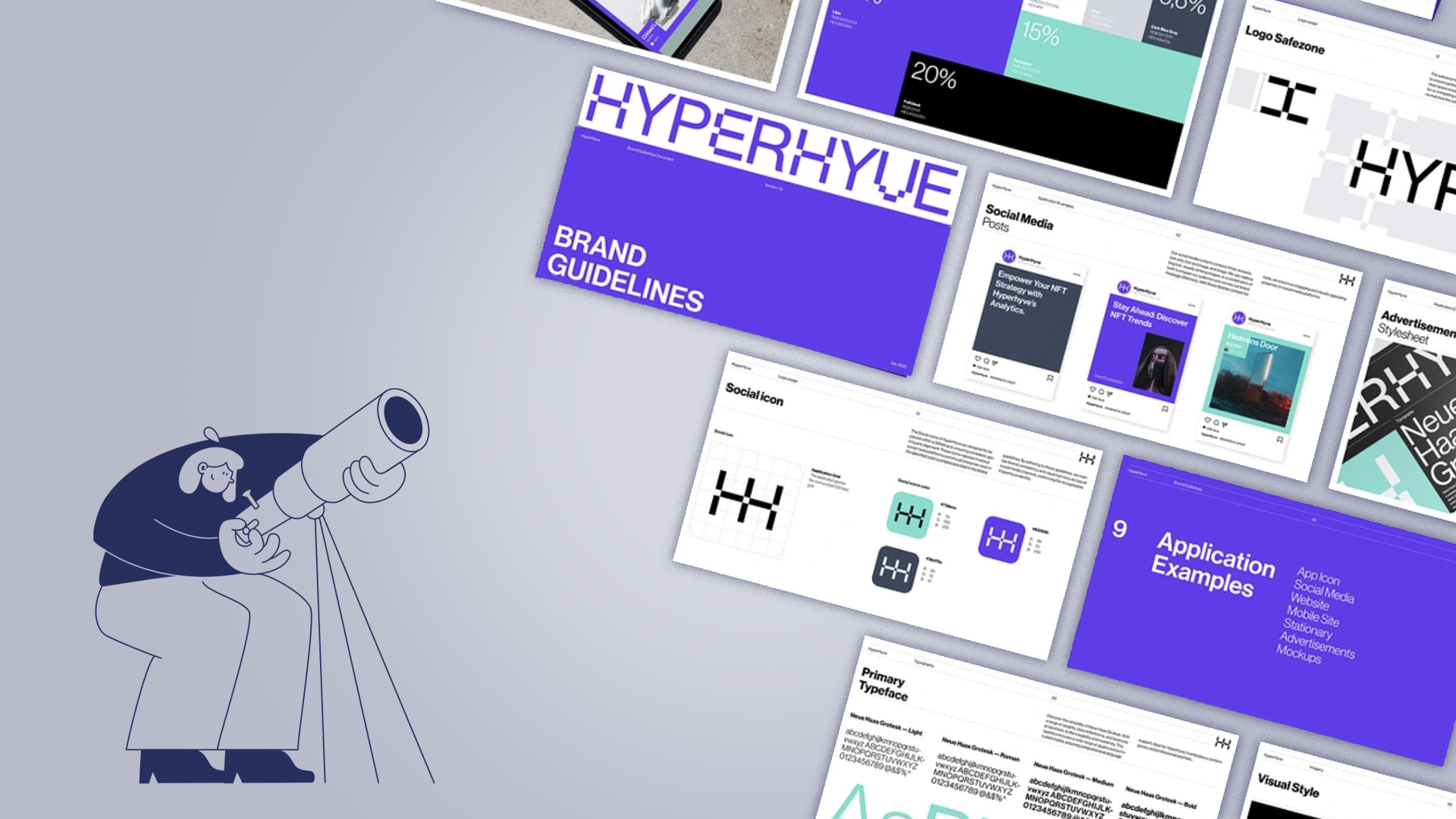
Why Brand Guidelines are Crucial for Business Success
In today's competitive landscape, what truly sets a thriving large business apart? Is it simply a memorable logo? The answer, unequivocally, is no. While a striking visual identity is a component, a brand is the holistic perception – the thoughts and feelings evoked in your customers, stakeholders, and partners with every interaction. To ensure this perception is consistently positive and powerfully resonant, robust brand guidelines are not just beneficial, they are absolutely essential.
Think of your brand as a carefully cultivated garden. Without clear boundaries, consistent nurturing, and defined principles, it risks becoming overgrown, chaotic, and ultimately losing its intended beauty and purpose. Brand guidelines act as the essential framework for this garden, providing the structure and direction needed for consistent and impactful growth.
At Think Plus Ink, a creative communications agency dedicated to making design work and driving revenue through strategic design and compelling storytelling, we understand the power of a unified brand. We don't just create aesthetically pleasing visuals, we craft strategic narratives that resonate and deliver tangible results. Neglecting brand guidelines is akin to navigating without a compass.
What Exactly Are Brand Guidelines?
At their core, brand guidelines are a comprehensive set of rules that meticulously detail how your brand should be presented to the world. They bridge the gap between your brand identity (the visual and verbal elements that represent your company) and your brand strategy (your overarching plan for how your brand will achieve its objectives). These guidelines ensure that every touchpoint, from your website to your packaging, speaks with a consistent and unified voice, reinforcing your core messages, values, and ultimately, your credibility.
Think of them as the definitive rulebook for your brand. They provide clarity and consistency, ensuring that anyone interacting with or representing your brand does so in a way that aligns with your overarching vision.
Ready to build a stronger, more consistent brand? Let's chat about how Think Plus Ink can help you develop impactful brand guidelines.
The Anatomy of Effective Brand Guidelines
A well-crafted brand guideline document is a treasure trove of information, providing clarity and direction across all aspects of your brand's visual and verbal expression. While each brand's needs will vary, key elements typically include:
- Who You Are: A clear articulation of your brand's mission, vision, and values. This provides the foundational context for all design and communication decisions.
- Your Brand Proposition & Strapline: Concise statements that define your unique offering and the core message you want to convey.
- Key Messages: The central themes and talking points that should be consistently communicated across all platforms.
- Your Logo: Detailed specifications regarding its design, acceptable colour variations, minimum and maximum sizes, clear space requirements, and rules for its application across different media. This section also covers any variations for specific contexts or localisation needs.
- Your Colour Palette: A defined set of primary and secondary colours, along with guidance on their usage, including acceptable tints, section colour applications, and recommended colour proportions.
- Your Typography: Specification of your primary and secondary typefaces, including font weights, sizes, and usage guidelines for different applications (e.g., headings, body text).
- Photography & Imagery: Guidelines on the style, tone, and subject matter of photography and illustrations that align with your brand's personality.
- Brand Elements & Icons: Details on any unique graphic elements, patterns, or icons that contribute to your visual identity and how they should be used.
- Words to Use & Avoid: A guide to your brand's tone of voice, including preferred vocabulary, grammar rules, and any words or phrases that should be avoided.
- Application Guidelines: Specific examples and templates for various communication platforms, including:
- Social Media Profiles & Avatars
- Brochure and Flyer Layout Options
- Website Design Principles
- Signage Specifications
- Advertising Treatments (digital and print)
- Merchandising Applications
- Packaging Design
- Copywriting Style & Editorial Guidelines
Developing comprehensive brand guidelines might seem like a significant undertaking, but the long-term benefits for your brand consistency and recognition are invaluable.
At Think Plus Ink, we have the expertise to guide you through this process.
The Critical Timing: When Should You Invest in Brand Guidelines?
The optimal time to develop your brand guidelines is concurrently with your logo design process. This ensures that your visual identity and its application across various platforms are considered holistically from the outset. Designing a logo in isolation without considering its real-world application can lead to inconsistencies and limitations down the line.
However, if your company currently operates without brand guidelines, now is the right time to rectify that. Regardless of your company's age or size, establishing clear guidelines will immediately enhance your brand consistency and professionalism. Don't wait until inconsistencies become a problem, be proactive in safeguarding your brand identity. Think Plus Ink can help you create robust brand guidelines tailored to your specific business needs, even if you already have an established logo.
Who Should Be Tasked with Creating Your Brand Guidelines?
The creation of effective brand guidelines requires a blend of strategic thinking and design expertise. Therefore, it is best entrusted to your graphic designer or a specialist marketing agency like Think Plus Ink. We possess the necessary understanding of design principles, brand strategy, and communication best practices to develop a comprehensive and user-friendly document that serves your brand effectively. Attempting to create these guidelines in-house without the requisite expertise can lead to a document that is either too simplistic to be truly useful or too complex and impractical to implement.
What Does a Brand Guideline Document Look Like?
Typically, brand guidelines are compiled into a user-friendly PDF document that can be easily shared with internal teams, external partners, and any third-party agencies or freelancers working on your brand. The document should be clearly organised, visually engaging, and easy to navigate, allowing users to quickly find the information they need. Some companies even choose to host their brand guidelines on a dedicated section of their website for broader accessibility.
Putting Your Brand Guidelines into Action: How to Use Them Effectively
The true value of brand guidelines lies in their consistent application. Whenever you engage a third party for any design or communication work (whether it's for new packaging, a website redesign, marketing materials, or even internal communications) providing them with a copy of your brand guidelines is paramount. This ensures that their work aligns seamlessly with your established brand identity and strategy, maintaining a cohesive and professional image.
The Cost of Neglecting Brand Guidelines: Brand Inconsistency and its Consequences
Operating without clear brand guidelines can have significant negative repercussions for your business. When external partners or even internal teams lack clear direction on how your brand should look and sound, they may inadvertently introduce their own interpretations, leading to:
- Inconsistent Logo Usage: Incorrect sizing, colour variations, or placement that dilute brand recognition.
- Wrong Colour Palettes & Typography: Visual elements that clash with your established identity, creating a disjointed and unprofessional appearance.
- Mismatched Tone of Voice: Communication that doesn't align with your brand's personality, confusing your audience and weakening your message.
- Overall Brand Dilution: A lack of visual and verbal consistency erodes brand recognition, weakens your brand identity, and ultimately undermines your credibility.
This inconsistency can lead to confusion among your target audience, making it harder for them to recognise and connect with your brand. In the long run, this can negatively impact customer loyalty and ultimately lead to reduced sales.
Considering Your Brand's Future? Let's Talk.
If you're currently evaluating your brand's effectiveness and recognise the need for clear direction, now is the perfect time to explore the development of comprehensive brand guidelines. At Think Plus Ink, we're passionate about helping businesses like yours unlock their full potential through strategic design and consistent communication.
We offer an exploratory consultation to understand your current brand position, your aspirations for the future, and the timeline you envision. Following this initial discussion, we can determine if Think Plus Ink is the right partner to help you craft brand guidelines that will serve as a solid foundation for your continued success. Regardless of whether we collaborate, you'll gain valuable insights into how well defined brand guidelines can revolutionise your brand's impact.
Don't leave your brand's perception to chance. Invest in the clarity and consistency that brand guidelines provide. Contact Think Plus Ink today – we're ready to help you make your design work, driving revenue and building a stronger, more recognisable brand.
Q&A: Logos and Design – Addressing Common Questions
Q: Is my logo the same as my brand?
A: No, your logo is a crucial part of your brand identity, but it's not the entirety of your brand. As discussed, your brand encompasses the overall perception and feeling associated with your company. Your logo is a visual representation of that brand, but elements like your tone of voice, values, customer experience, and reputation all contribute to your brand.
Q: We're a large company with multiple sub-brands. Do we need separate brand guidelines for each?
A: This depends on the relationship between your master brand and your sub-brands. Often, a hierarchical system is employed. You might have overarching brand guidelines for the parent company, with specific sections or supplementary guidelines outlining the nuances and visual treatments for each sub-brand. This ensures both consistency across the organisation and distinctiveness for individual offerings. Think Plus Ink can advise on the best approach for your specific brand architecture.
Q: Our logo is quite old. Should our brand guidelines still revolve around it, or is it an opportunity to rebrand?
A: This is a critical question. If your logo no longer accurately reflects your company's values, offerings, or target audience, developing brand guidelines around it might be a case of polishing something that's fundamentally outdated. Brand guidelines can certainly inform a refresh or rebrand process. In fact, it's often beneficial to define your brand strategy and desired perception before embarking on logo redesign. Think Plus Ink offers both branding and design services and can guide you through this process strategically.
Q: How often should we review and update our brand guidelines?
A: Your brand guidelines should be a living document. It's advisable to review them at least annually, or whenever there are significant changes within your company, such as new product launches, shifts in target audience, or a change in strategic direction. This ensures your guidelines remain relevant and continue to accurately represent your evolving brand.
Q: Can Think Plus Ink help us not only create brand guidelines but also implement them across our various marketing materials?
A: Absolutely! At Think Plus Ink, we offer a comprehensive suite of creative services. We can not only develop robust brand guidelines tailored to your business but also assist with their implementation across all your marketing and communication materials, ensuring consistent and impactful brand messaging across every touchpoint. Let's discuss how we can help you bring your brand to life.


